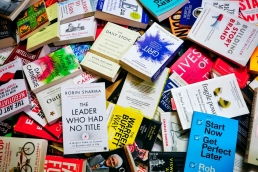Is Your Resume up with the Times?
Want to get your resume to the top of the employer’s interview list? If you’ve been using the same resume for a few years now it might be time to do a revamp before sending it out if you want to compete.
Gillian Kelly, from Outplacement Australia, an invited judge in Career Director International’s 2016 “Toast of the Resume Industry” Awards says resumes are continually transforming and the last 12 months have been another big year of resume innovation. Eye-catching visual elements, ATS technology-friendly formats and clever story-telling are just a few of the resume techniques that featured in this year’s resume industry awards and being used by resume experts to capture the employer’s attention.
Here are some of 2016’s Resume trends
Fluff is out, substance is in. Resume experts know employers are tired of seeing the same overused adjectives and buzzwords that give no insight into a person’s ability to do the job. Kelly says, if you want to make an impact, ditch flowery filler and simply let your career results do the talking. Across the board, we see great resumes are the ones injected with powerful achievements and selectively chosen career results to create impact through evidence rather than fluff. In particular, featuring impressive ‘career highlights’ in the opening profile is a technique some writers are cleverly using to create instant ‘wow’ and capture the hirer’s attention.
Creative Visuals are on Trend. Last year saw a continued move toward more visual elements being used in the resume including colourful infographics, icons, testimonials and feature boxes, particularly for the creative industries. Visual-based resumes and eye-catching column layouts allow the reader to take in the information more easily but Kelly cautions these types of creative-format resumes come with big risk and should only be used under certain circumstances. Creative elements such as graphs, symbols, text boxes, shading and fancy fonts can all interfere with applicant tracking systems, the technologies used by recruiters and employers. These technologies help hirers by extracting key information from the resume and assessing its suitability against key criteria. These systems want easy-to-read text, common fonts and plain formats. Many resume writers are managing this issue by providing people with multiple resume formats including eye-catching graphical versions that can be used for networking along with plainer, text-based formats that can be used when uploading online or providing to hirers using ATS systems.
Reverse Engineering of Content is on the Increase: With the increasing use of applicant tracking systems by employers to sort and shortlist, reverse engineering of content is getting more of a focus than ever. Resumes that win interviews are now typically strategically built to ensure content that reflects the keywords, skills and experience sought by the hirer for the role. New online tools are even available that can help identify and assess important keywords to be used in the resume. This is not to be confused with keyword stuffing, says Kelly, which is ineffective, but this is instead the careful development of the resume content designed to showcase and evidence specific important skills identified by the hirer and sought by their applicant tracking system. Generic resumes are now a big mistake if you want to compete, so spend time customising your resume for the position you are applying for, is her advice.
Personal Branding and Career Story-telling Makes for More Insights. Generic cover letters and dry lists of responsibilities are no longer cutting it in modern applications with employers wanting to get more insight into our strengths, abilities and experience. Effective story-telling skills are now making resumes and cover letters more interesting, whilst at the same time giving employer’s better perception of the person, their brand, personality and contributions. Don’t make the mistake of thinking ‘story-telling’ means grandiose, long-winded paragraphs in resumes. Brief is still best. Interesting one- to two-line bullet point examples that succinctly show your successes using your skills and personal strengths to overcome business challenges and deliver value to past employers, are the ideal. It’s also important not to be tempted to get too creative. It’s easy to make the mistake in cover letters of going from interesting and engaging to gimmicky and cringe-worthy so keep it professional.
Social Media Convergence. Links to online portfolios and LinkedIn profiles are now being included in resumes to help give the reader access to more information, and encourage contact. A LinkedIn profile that supports and aligns with the information in the resume is now considered an integral part of a successful job search and included in most resumes.
With resumes changing all the time, it can be helpful to seek the support of a professional career practitioner. Look for an experienced resume writer you are comfortable with and who holds appropriate credentials. Professional career industry associations are a good starting point when seeking these services.
Related articles: The New Career Objective and Why You Need It
Related Posts
5 Golden Career Rules for a Life Well-lived
Our careers have a big impact on our happiness. This infographic shares some golden career rules to follow to achieve a…
The New Career Objective & Why You Need It!
You might have heard the advice to ditch your career objective. This article explains why you don't need to lose it,…
Avoid These 3 Mistakes and Make Sure You’re Seen by Recruiters
The job market has changed and with it so has how the job application process works. This video shows how avoiding…
Redundancy and Bias Against the Unemployed
Career change is hard at the best of times. But for those affected by redundancy it can be a double whammy when
Building Your Personal Brand – Aussie Style
Australian's typically find self-promotion difficult. This slideshare provides some easy strategies and tips for…
Applicant Tracking Systems: 5 Things You Need to Know
In order to have a human review your resume, you are likely first going to have to make it past an applicant tracking…
Redundancy Sucks. The Fastest Route Back to the Happily Reemployed
Redundancy hurts. Read how to take steps that will provide you with the fastest route back to the happily
Resume Design & Applicant Tracking Systems (Video)
An instructional video on how to design your resume to be effective in applicant tracking systems
Explaining Redundancy in Your Resume or CV
Should you explain your redundancy in your resume? How to manage redundancy in your resume.
Given Outplacement? Why You Want To Use It!
Modern outplacement explained and how it can benefit you. If you’ve never had outplacement before, or only used…
Redundancy Survival Tips for the First Week
Tips for the first week. What To Do (And Not To Do) When Your Role Has Been Made Redundant! Most people when they…
Finding Labour Market Information
Labour market information is important to career planning. The following lists sources of Australian Labour Market…
5 Top Career Books to Fuel Your Career Change
5 books to help you make a successful career transition, the trick is to arm yourself with the very
9 Quick Changes to Improve Your Resume
If you are short on time and needing to update your resume quickly here are 9 quick tips on changes that are easy to…
Salary Negotiation – Tips for Getting What You are Worth
For many people one of the most nerve-wracking parts of the selection process can be the salary
Resume Writing Credentials Explained
You want to find a resume expert but how do you know who is a seasoned writer from a rookie? Resume writing
Seven Quick Job Search Tips
This fun little slideshare provides 7 quick tips for job search. If you are part of one of our outplacement programs -…
Performance Tips for a Video Interview
Your presentation skills on video can make an incredible difference to the impact you deliver and your lasting…
How to Choose a Decent Resume Writer
There is a lot of variability in resume writers so how do you choose a good resume writer. Anyone can advertise as a…
The Video Interview – What To Expect
Video interviews are becoming more common. Learn what to expect in this new type of interview process.
Setting Up for A Video Interview
No-one wants a technical hiccup in their video interview. Make sure your video interview goes smoothly by checking…
5 Ways to Get Happier in Your Job!
We spend more than 2000 minutes a week on our workplace activities. Here are a few tips to be happier at work.
Understanding The Modern Resume
Modern resume design is complex. New HR technologies, shifting resume expectations and a move to integrate online…
Kick Interview Nerves By Doing These 5 Things
If you’ve been invited to interview, you are probably starting to feel nervous. This is actually a good thing.…
Why Redundancy is No Longer a Dirty Word?
Will telling people about your redundancy damage your job search? This article provides tips on communicating the news…
Call us, we'd love to hear from you.
Find out how we can design a program to meet your needs.
Not familiar with outplacement? Learn more in our information section – what is outplacement?
Call us, we'd love tohear from you.
Find out how we can design a program to meet your needs.
Not familiar with outplacement? Learn more in our information section – what is outplacement?
























